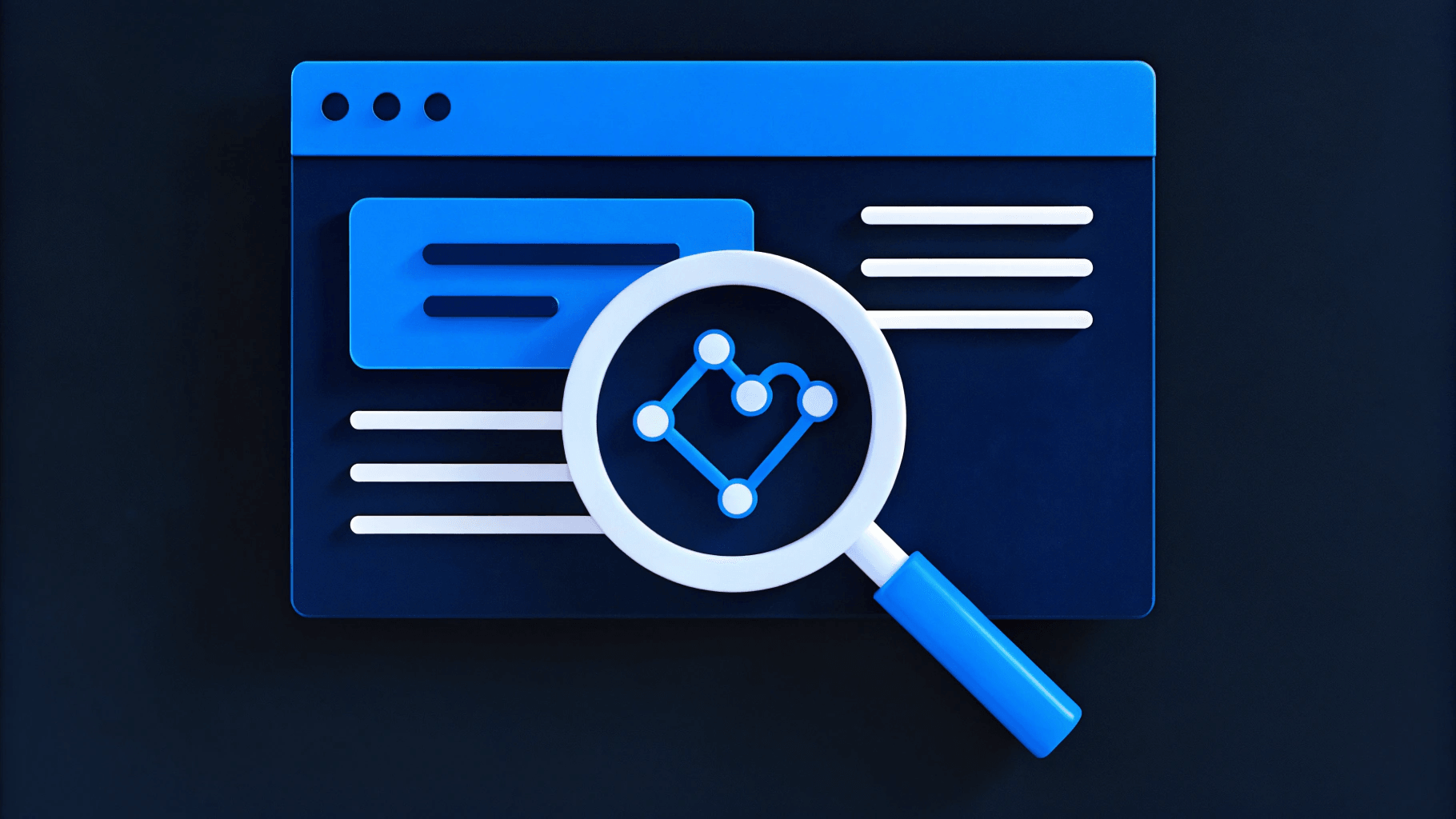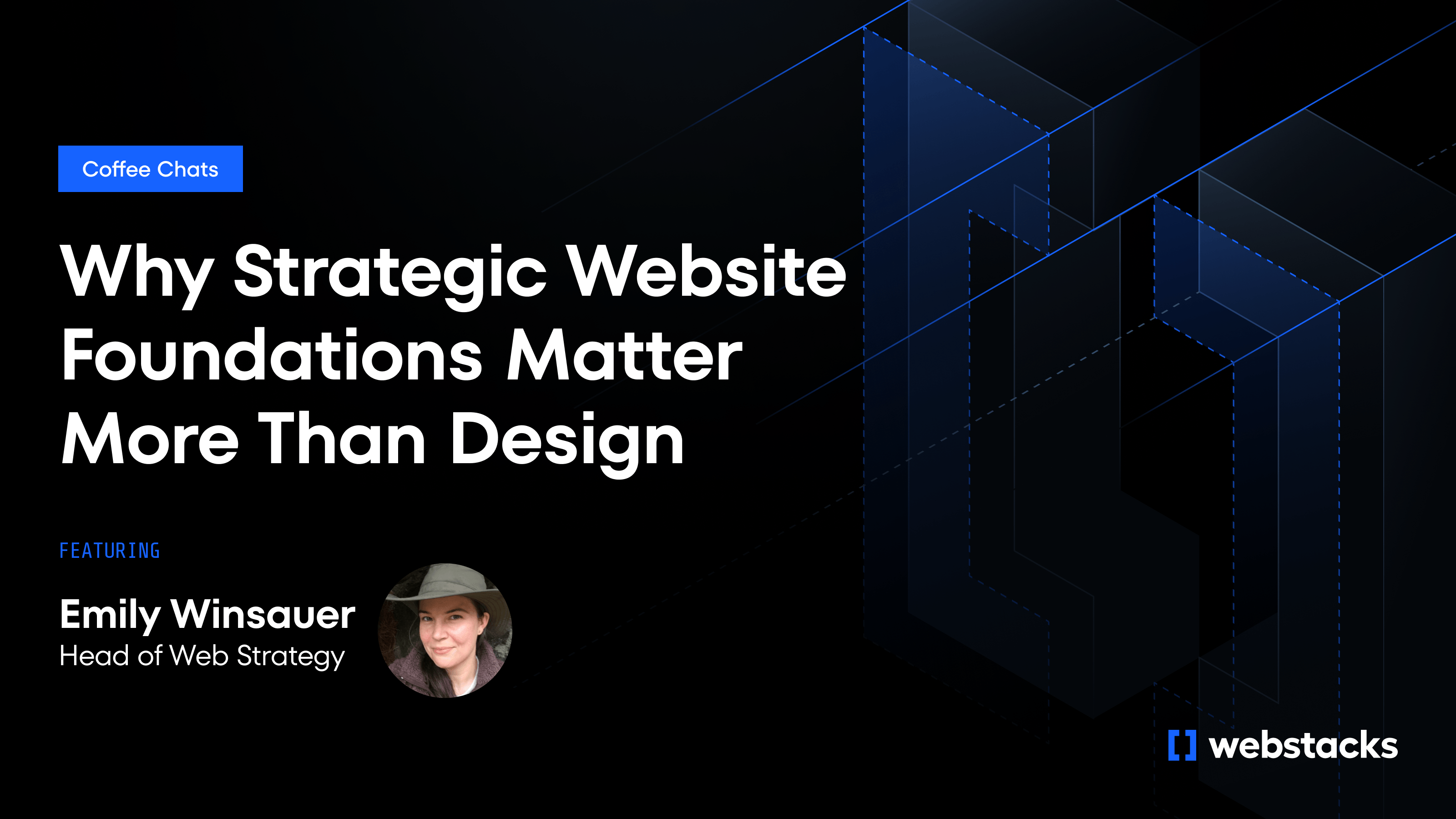Having a clear plan on how to launch a website can save you from countless frustrations and expensive do-overs later on. This plan should cover everything from reliable hosting to clean design and security. Plus, when you go the extra mile and adopt modern practices like composable architecture, you can build a website that looks good and also makes a real impact on your business.
In brief:
- A website launch plan covers everything from choosing a memorable domain to optimizing for SEO and security.
- Selecting the right CMS affects how easily you can manage and expand your site.
- Post-launch strategies like performance monitoring support continuous improvement.
1. Use a Memorable Domain Name
Your domain name is like your online business card, so it should be short, easy to remember, and reflect what you do. A strong domain boosts credibility, subtly helps with SEO, and encourages people to visit you directly instead of relying only on search engines.
Shorter is usually better—aim for under 15 characters. Avoid tricky spellings or random numbers that could lead to typos and lost visitors. Keep your social media handles in mind, too, so your brand stays consistent across all platforms.
While the domain alone won't shoot you to the top of search rankings, it contributes to a user-friendly experience that supports better SEO. A name people can easily type or recall naturally leads to more direct traffic and word-of-mouth referrals. Steer clear of stuffing in keywords—it comes off as spammy and can backfire. Simple, brand-focused names work best.
Choosing a reliable registrar matters as much as selecting the right domain. Well-known options like GoDaddy, Namecheap, and Google Domains offer different features, prices, and extras. Consider factors like customer support, domain privacy, and how easy it is to transfer your domain before settling on a provider. You might also think about securing multiple extensions (like .com and .net) to protect your brand as you grow.
2. Decide on a CMS
Your content management system (CMS) affects how easily you can update pages, tweak designs, and expand your site later. Think about your goals and resources, then choose a CMS that offers ease of use, strong SEO features, and the flexibility to shape your site as you envision it. Here are some headless and traditional options to consider:
Webflow: Best for No-Code & Design-Focused Websites
Webflow offers a clean, drag-and-drop interface that lets you create striking designs without needing to code. Its real-time editor gives you precise control over every layout element. If you value sleek visuals and interactive experiences, Webflow's no-code approach is worth considering. Built-in SEO tools make tasks like meta tagging simpler, but advanced customization can increase costs as your site grows.
Contentful: Best for Enterprise-Level Headless Content Management
Contentful is a powerful headless CMS designed for enterprises that need to manage content across multiple platforms and devices. It provides a flexible content model that allows developers and content creators to work together efficiently. With APIs, Contentful integrates seamlessly with your tech stack, enabling you to deliver content anywhere. Its scalability and reliability make it a strong choice for businesses anticipating rapid growth.
Sanity.io: Highly Customizable Headless CMS with Real-Time Collaboration
Sanity offers a real-time, collaborative editing environment that improves productivity. Its headless architecture provides the flexibility to build custom workflows and content structures that fit your specific needs. Sanity's unique content studio is fully customizable, and developers can tailor the CMS using JavaScript and popular frameworks. If collaboration and customization are a priority for you, Sanity.io is worth exploring.
Prismic: Focused on Efficient Publishing and Simplicity
Prismic simplifies the content management process with its straightforward interface and slice-based architecture. It allows you to create reusable content components, and makes it easier to maintain consistency across your site. Prismic's writing room offers a clean space for content creators, while developers can use its API to deliver content anywhere. For teams looking to streamline their publishing workflow, Prismic provides a balance of simplicity and functionality.
Strapi: Open-Source Headless CMS for Ultimate Flexibility
Strapi is an open-source headless CMS that offers complete control over your content and how it's delivered. It's highly customizable and allows you to self-host your data. With Strapi, developers can easily create APIs tailored to their needs while benefiting from a rich plugin ecosystem. Its community-driven nature means continuous improvements and support. Strapi is ideal for teams that require deep customization and prefer an open-source solution.
3. Design a User-Friendly and Mobile-Optimized Website
A clean, responsive design encourages visitors to stay and explore what you offer.
Make navigation straightforward and keep design elements consistent. Quick loading times matter, so compress images and streamline code to make your website faster. Easy-to-read text and a visually appealing color scheme will make the user experience even better.
Many users browse on smaller screens, so building with mobile in mind is a non-negotiable. Your designers should create touch-friendly navigation, fluid layouts, and use font sizes that don't require zooming. Include alt tags, keyboard-friendly navigation, and appropriate color contrast to meet accessibility standards like WCAG 2.1.
As for page structure, use headers, subheaders, and bullet points to help visitors skim content. Calls to action should stand out and reward clicks with fast-loading, relevant pages.
4. Implement SEO Best Practices Before You Launch Your Website
Before you launch your website, make sure it’s optimized for search. This includes on-page, off-page, and technical elements—all working together to boost visibility.
Whether you're launching a new site or planning to redesign a website, implementing these best practices from the start:
- For on-page SEO, naturally integrate your primary keywords in titles, headings, and throughout the text. Short, descriptive URLs help search engines understand what your pages are about. Image alt text with relevant keywords adds another layer of clarity for both users and crawlers.
- For off-page SEO, get links from reputable sites, which act as a trust signal to search engines and boost your authority. Aim for quality over quantity. Explore collaborations, guest posts, or resource sharing with industry-related sites that can vouch for your content.
- For technical SEO, pay attention to site speed because it influences search rankings heavily. Tools like Google PageSpeed Insights highlight where to compress images or optimize scripts. Schema markup helps search engines understand your content, and responsive layouts provide a consistent mobile experience.
5. Set Up Analytics for Website Performance Tracking
Without analytics tools, you're operating in the dark. Tools like Google Analytics, Google Search Console, and heatmaps reveal how visitors interact with your site and rooms for improvement.
Google Analytics shows how people find your site, which pages grab their attention, and how long they stay. Set it up by creating an account, adding a property, and installing the tracking code provided. Keep an eye on:
- Pageviews: Number of individual page hits.
- Sessions: Groups of interactions within a set time.
- Users: Unique visitors over a period.
- Bounce Rate: Percentage of single-page visits.
- Traffic Sources: Channels (search, social, direct, referral) bringing in users.
Google Search Console lets you see how Google views your site, from the keywords you rank for to crawl errors. It also gives you access to data that highlights content performance and potential issues like broken links.
Heatmap tools (Hotjar, Crazy Egg) visualize where visitors click, scroll, or hover. This real-time feedback shows which layout elements encourage or discourage engagement. With that information, you can place your call-to-action where people naturally look or simplify a page that's too cluttered.
6. Secure Your Website with SSL & Anti-Malware Protections
Neglecting security puts your reputation and user trust at risk. Firewalls, anti-malware scans, and SSL certificates work together to keep hackers, bots, and data thieves away.
SSL encrypts the data between your website and a visitor's browser. It's the difference between exposing sensitive information and protecting it from interception. The padlock icon (which appears in web browsers next to your URL) reassures users that you take security seriously. Search engines also reward HTTPS sites with better rankings.
A web application firewall (WAF) filters and blocks suspicious traffic, preventing common exploits like XSS and SQL injection. Keeping your CMS and plugins updated adds another layer of defense, while malware scanners detect harmful code before it causes damage. Consider intrusion detection systems for extra security, and schedule regular audits to stay ahead of new threats.
In case an attack does happen, regular, automated backups allow your site to recover quickly. Store backups in multiple places, such as cloud storage and offline drives, for safety. Test those backups periodically to make sure they work.
7. Create a Pre-Launch Website Checklist
A final sweep of technical, design, and content elements helps catch any bugs, broken links, or missing pieces before you unveil your site to the world. Include the following items in your checklist:
Technical Checks & Performance Testing
- Verify that your site works well across phones, tablets, and browsers of all sizes.
- Test third-party tools (social sharing buttons, email sign-ups) to make sure they're functioning.
- Double-check DNS settings—everything should point accurately to your new site.
Content Review & SEO Optimization
- Make sure all metadata supports your SEO goals.
- Verify internal links lead to the right places.
- Check that images are optimized and have descriptive alt text.
Launch Day Preparations & Testing
- Confirm hosting servers can handle an initial surge in traffic.
- Do a final walkthrough. Try out different user paths, from reading a blog post to completing a purchase.
- Create a complete backup before launch.
- If you have a team or developer, coordinate schedules in case any quick fixes are needed.
Launch Your Website with Confidence
A successful website launch is all about preparation. With the right checklist, you can cover every detail, from SEO tags and analytics to security and caching, so your site is ready to perform from day one.
Looking ahead, choosing the right CMS can set your site up for long-term success. If you’re considering a headless CMS for greater flexibility and scalability, we’ve got you covered. Our headless CMS implementation checklist offers a clear, step-by-step guide to simplify your transition from traditional to headless.




